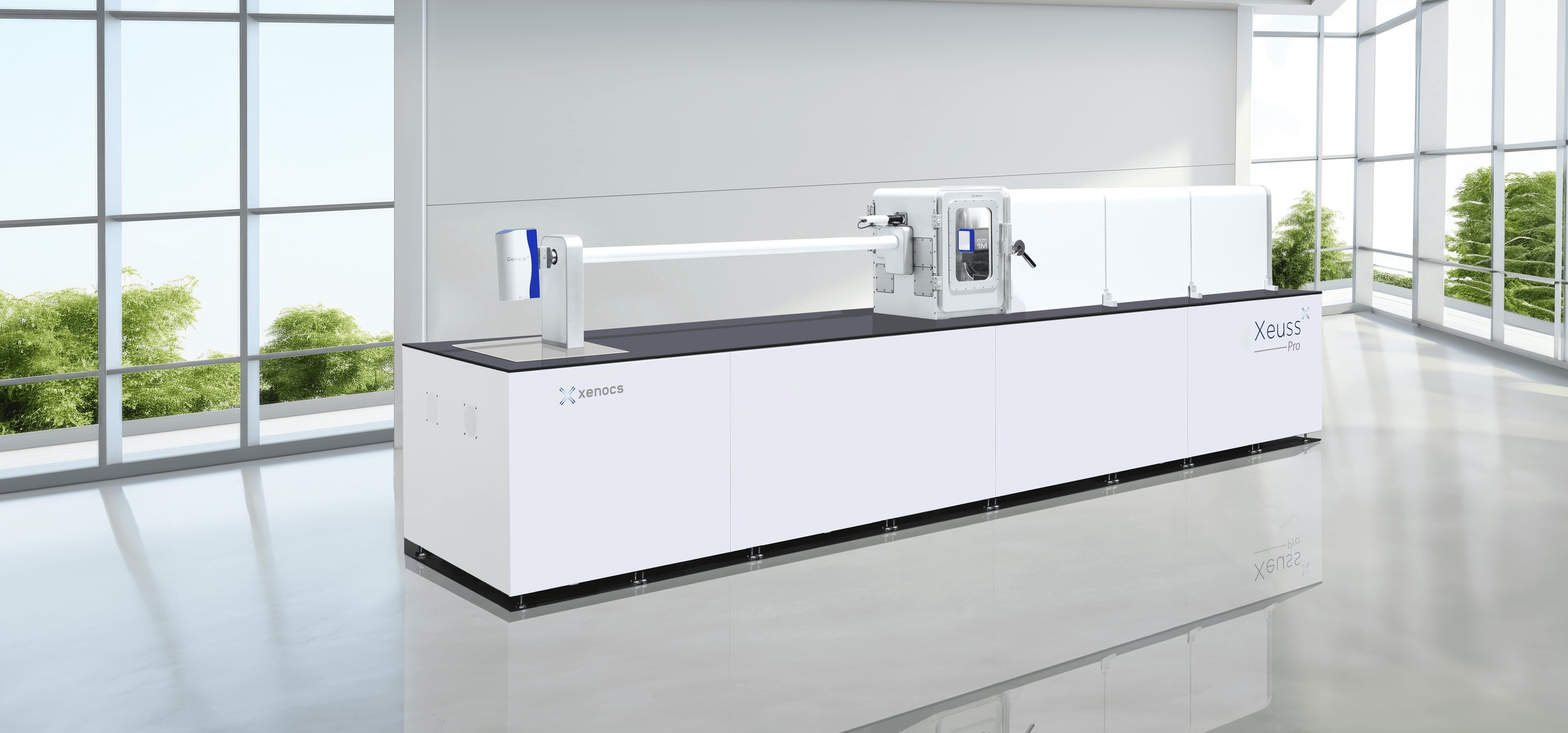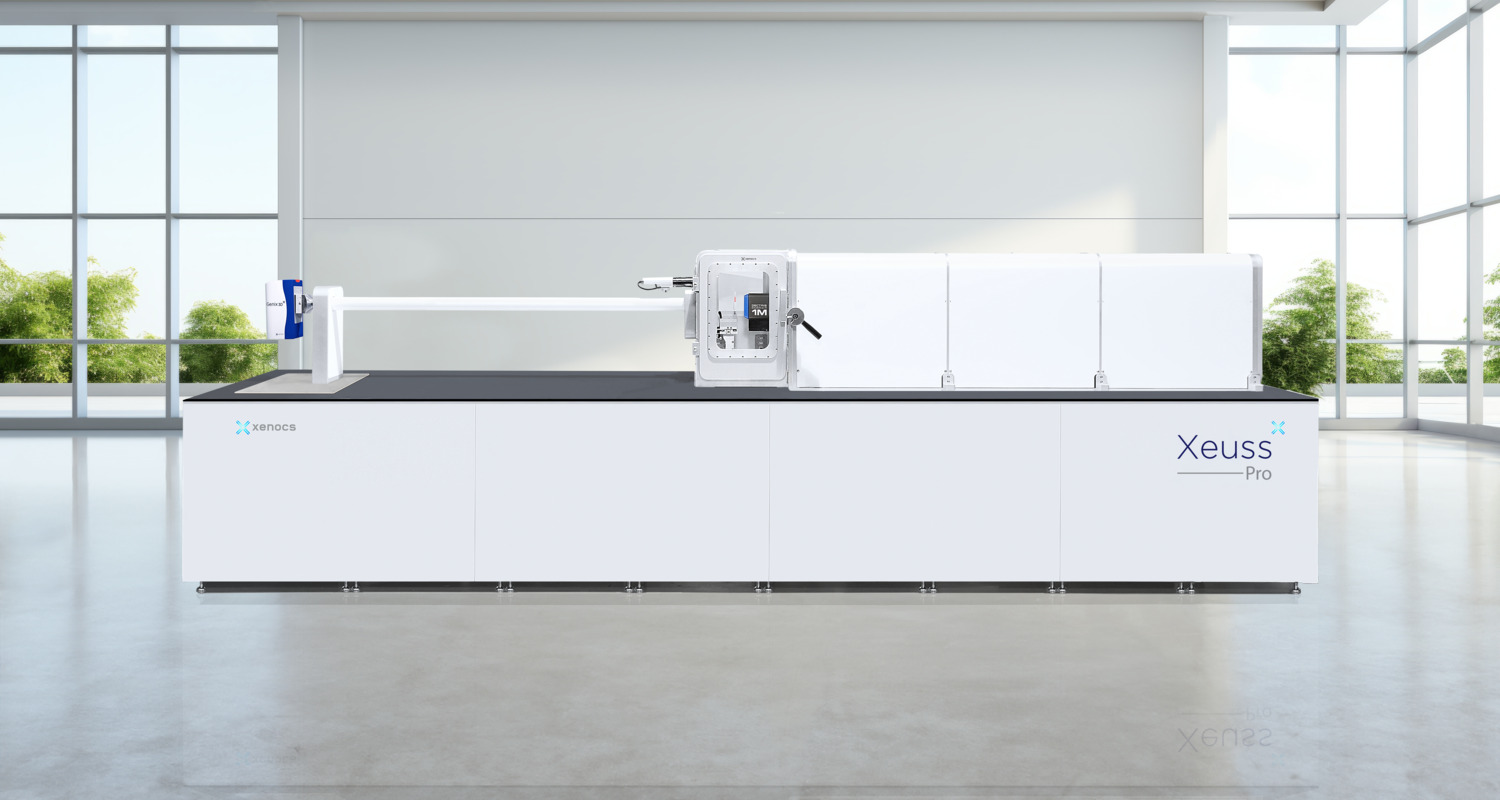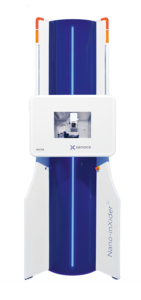What are the advantages and limitations of small angle X-ray scattering (SAXS) and differential scanning calorimetry (DSC), and how do they complement each other?
Exploration of phase transitions and the development of representative phase diagrams are crucial in materials science and have been the focus of extensive theoretical and experimental research. When designing new materials, it is important to have a thorough understanding of their physical and chemical properties in ambient conditions as well as their evolution as a function of various parameters that mimic standard working or manufacturing conditions.
To decipher the complex interplay between the chemical composition and the material’s properties it is often necessary to combine several experimental techniques. Here we focus on presenting how small angle X-ray scattering (SAXS) and differential scanning calorimetry (DSC) can complement each other in painting a complete picture of a material.
The working principle and output of the two techniques are very different. DSC is a thermal method which measures the heat flow in a sample as it is subjected to controlled temperature changes. This enables the determination of the material’s thermal properties including its melting point, glass transition temperature or heat capacity. Understanding the material’s response to changes in temperature is crucial for the development of efficient manufacturing and processing methods. However, DSC alone does not provide information about the structure of a material.
To couple the phase-transition thermodynamics, as determined through DSC, with morphological changes, structural methods such as SAXS need to be employed. By measuring the scattering pattern of X-rays after they have passed through a sample, SAXS can provide the size, shape and spatial arrangement of nanoscale structures in a material.
Moreover, when analyzing samples consisting of different phases, such as different polymorphic forms, crystalline and amorphous regions, or multiple components, it can be challenging to quantify the individual contributions of each one using DSC alone. DSC measures the overall heat flow associated with phase transitions, which in this case will typically result in broad thermal signals. but it cannot directly distinguish between different phases and their contributions. On the other hand, SAXS/WAXS measurements can be used to quantify a sample composed of different phases and provide detailed structural information about each phase. This information can then be utilized to better interpret and decompose the broad phase transitions observed in DSC measurements, allowing for a more comprehensive analysis of the phase transitions and their components. In addition, DSC is unable to detect the anisotropy of observed crystalline phases, which is considered to be the driving mechanism underlying reinforced properties e.g., polymer fiber technology [1-3].
Furthermore, both techniques find applications in a wide range of fields such as:
- Investigating the structure and thermal behavior of polymers,
- Studying the thermal stability of proteins [4],
- Characterizing the morphology of nanoparticles,
- Understanding the behavior of lipids [5]
The combination of SAXS and DSC techniques offers a particularly powerful toolkit for studying polymers. Their synergistic capabilities enable the characterization of polymer morphology, quantification of phase transitions, assessment of thermal stability and optimization of material design and processing. One example of how the two techniques are used together to obtain an accurate description of the thermal behavior and morphological characteristics of a semicrystalline polymer is presented below. This integrated approach is able to enhance the understanding of the structure-property relationships in polymers, facilitating thus advancements in polymer science and engineering.

Lamellae thickness of semicrystalline polymers as revealed by SAXS and DSC
A comprehensive understanding of the lamellar structure of semicrystalline polymers is essential for optimizing their properties and processing conditions, as well as for designing materials for specific applications. The thickness of the crystals, in particular, influences several parameters such as the degree of crystallinity and the packing of the polymer chains, which in turn affect the strength, stiffness and thermal stability of the material. The size and distribution of the crystals can also impact the scattering of light within the material, which can change the appearance and transparency of the polymer.
Small angle X-ray scattering and differential scanning calorimetry are among the most frequently used methods for determining the thickness of the lamellar crystals of semicrystalline polymers. The calorimetric method makes use of the Gibbs-Thomson equation to transform the melting of the lamellar crystals into lamellar thickness. This can however result in underestimated values if the polymer contains a swollen amorphous phase which may induce a decrease of the melting temperature [6].
In the case of SAXS measurements, using the one-dimensional correlation function enables accurate and reliable determination of both the long period and thickness of lamellar crystals.
When analyzing the influence of nonadecane content on polypropylene polymers a significant decrease of the melting temperature of the lamellar crystals was observed as a function of increasing nonadecane concentrations through DSC measurements (see Table 1) [6]. Using the Thompson-Gibbs equation, this translates into a reduced lamellae thickness with increasing nonadecane content. To ensure accurate results and avoid an overestimation of the lamellar thickness, it is essential to carefully assess the experimental parameters involved in DSC [7]. At the same time, the degree of crystallinity was observed to remain constant.
To test this conclusion additional DSC measurements were performed on the blends after extraction of the filler. After the extraction process, the degree of crystallinity together with both the melting temperature and consequently the thickness of lamellae return to the values characteristic of the reference material (see Table 1). This indicates that the lamellar thickness is not in fact influenced by the modifier content.
| Sample | Enthalpy of melting [J/g] | Crystalline mass fraction | Temperature of melting [oC] | Thickness of lamellae [nm] |
| PP0 | 104.5 | 0.50 | 163.5 | 6.9 |
| PP5 | 104.2 | 0.50 | 162.3 | 6.7 |
| PP30 | 102.7 | 0.49 | 153.4 | 5.6 |
| PP0_e | 102.7 | 0.49 | 163.6 | 6.9 |
| PP5_e | 104.0 | 0.50 | 164.1 | 7.0 |
| PP30_e | 104.9 | 0.50 | 164.8 | 7.1 |
Table 1. Thermal and structural properties reference polypropylene (PP0) and miscible blends containing 5 and 30 (wt%) of nonadecane (PP5 and PP30). Data extracted from DSC measurements performed before and after extraction of nonadecane (PP0_e, PP5_e and PP30_e) by supercritical CO2 extraction. Data source: Polymer Testing, 2018, DOI: 10.1016/j.polymertesting.2017.11.028
To determine the true values of the thickness of lamellar crystals, SAXS measurements analyzed using the correlation function method proved to provide reliable results. As shown in Table 2 the presence of nonadecane will cause an increase in the value of the long period while the lamellae thickness remains virtually unchanged. This is explained by the fact that nonadecane (which is a non-cocrystallizing component) is moved toward the interlamellar regions during the solidification process. As a result of the swelling of the amorphous phase, an increase of the long period will be observed while the thickness of lamellae remains unaltered.
| Sample | Long period [nm] | Thickness of lamellae [nm] |
| PP0 | 14.7 | 5.0 |
| PP5 | 15.1 | 5.0 |
| PP30 | 16.2 | 5.2 |
Table 2. Long period and thickness of lamellar crystals obtained from SAXS measurements using the correlation function method. Data source: Polymer Testing, 2018, DOI: 10.1016/j.polymertesting.2017.11.028
This research proved that while DSC measurements provide valuable insight into the thermodynamic properties of a material, to obtain a complete and correct understanding of the material’s behavior, the morphological characteristics need to be determined using structural methods such as SAXS.
In conclusion, the complementary nature of SAXS and DSC allows researchers to gain a deeper understanding of the properties of materials, from the nanoscale structure to the thermal behavior. By combining these techniques, a wide range of materials, including polymers, proteins, nanoparticles, and lipid bilayers, can be probed, which can lead to the development of new materials with tailored properties.
| SAXS/WAXS/GISAXS | DSC | |
| Types of samples | gel, solid, powder, liquid, turbid or not | gels, solids, powders, liquids |
| Sample preparation | Minimal | Minimal |
| Observation volume | 0.1 – 1 mm³ | Few mm³ |
| Range | < 1 - 350 nm (up to 1.5 µm USAXS) | - |
| In-situ or operando | Yes | No |
| Measuring time | Fast | Fast |
| Statistics | Statistically relevant results | Statistically relevant results |
| Spatial Resolution | Low | - |
| Data | Scattering pattern in reciprocal space | Heat flow |
| Beam damage | No | No |
| Limitations | Requires sufficient electron density contrast | Requires sufficient weight |
| Information | Size, shape, crystallinity, orientation, bulk and surface nanostructures, correlation function, crystalline and nanostructure phases identification | Characteristic temperatures: glass transition, order-order phase changes and melting point. |
[1] X. Yi, Y. Gao, M. Zhang, C. Zhang, Q. Wang, et al,, Tensile Modulus Enhancement and Mechanism of Polyimide Fibers by Post-Thermal Treatment Induced Microvoid Evolution, European Polymer Journal 91, 232 (2017). DOI: 10.1016/j.eurpolymj.2017.03.063.
[2] R. Sarabia-Riquelme, M. Shahi, J. W. Brill, and M. C. Weisenberger, Effect of Drawing on the Electrical, Thermoelectrical, and Mechanical Properties of Wet-Spun PEDOT:PSS Fibers, ACS Appl. Polym. Mater. 1, 2157 (2019). DOI: 10.1021/acsapm.9b00425.
[3] N. Dencheva, Z. Denchev, M. J. Oliveira, and S. S. Funari, Relationship between Crystalline Structure and Mechanical Behavior in Isotropic and Oriented Polyamide 6, Journal of Applied Polymer Science 103, 2242 (2007). DOI: 10.1002/app.25250.
[4] J. Sonje, S. Thakral, S. Krueger, and R. Suryanarayanan, Enabling Efficient Design of Biological Formulations Through Advanced Characterization, Pharm Res (2023). DOI: 10.1007/s11095-023-03495-z.
[5] M. Rappolt, A. Hodzic, B. Sartori, M. Ollivon, and P. Laggner, Conformational and Hydrational Properties during the Lβ- to Lα- and Lα- to HII-Phase Transition in Phosphatidylethanolamine, Chemistry and Physics of Lipids 154, 46 (2008). DOI: 10.1016/j.chemphyslip.2008.02.006.
[6] A. Rozanski, M. Safandowska, and A. Krajenta, DSC/SAXS Analysis of the Thickness of Lamellae of Semicrystalline Polymers-Restrictions in the Case of Materials with Swollen Amorphous Phase, Polymer Testing 65, 189 (2018). DOI: 10.1016/j.polymertesting.2017.11.028.
[7] Y. Furushima, M. Nakada, M. Murakami, T. Yamane, A. Toda, et al., Method for Calculation of the Lamellar Thickness Distribution of Not-Reorganized Linear Polyethylene Using Fast Scanning Calorimetry in Heating, Macromolecules 48, 8831 (2015). DOI: 10.1021/acs.macromol.5b02278.
Products
Discover our SAXS instruments in the lab
Xeuss Pro
The Ultimate Solution for Nanoscale Characterization using SAXS/WAXS/GISAXS/USAXS/Imaging




































